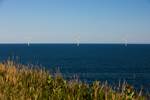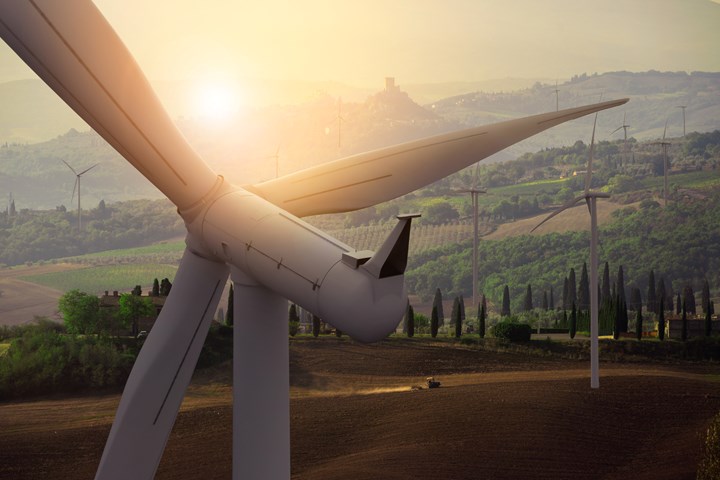U.S. DOE announces $30 million wind turbine materials, manufacturing funding opportunity
Funding opportunity seeks to increase cost efficiency of wind power generation through R&D projects for lightweight composite materials, streamlined 3D printing processes.
Share
Read Next
On Feb. 10, the U.S. Department of Energy (DOE) announced $30 million in funding to advance composite materials and additive manufacturing (AM) in large wind turbines, including for offshore wind energy systems.
“The wind sector has proven to be a reliable source of clean power for homes and businesses in a variety of geographic areas,” U.S. Secretary of Energy Jennifer M. Granholm says. “Investing in next-generation materials that will lower the financial barriers to widespread deployment supports President Biden’s domestic manufacturing and clean energy goals.”
Projects funded through this initiative will advance the priorities established in the DOE’s Offshore Wind Supply Chain Road Map and the current administration’s recently announced Floating Offshore Wind Shot, as well as furthering the U.S. president’s goals to deploy 30 gigawatts of offshore wind energy by 2030 and achieve a net-zero carbon economy by 2050.
Led by the Office of Energy Efficiency and Renewable Energy (EERE)’s Advanced Materials and Manufacturing Technologies Office (AMMTO), this funding opportunity seeks to improve the manufacturability and performance of composite materials associated with wind energy technologies.
Project topic areas include the following:
Large wind blade additive manufacturing
This topic seeks projects that build on existing polymer-based AM research that supports and advances more cost-effective large wind turbine blades. Polymer-based AM generally enables rapid prototyping, tooling, fabrication and testing while enabling novel designs and process configurations.
Additive manufacturing of non-blade wind turbine components
This topic seeks innovative AM solutions for lower cost, higher performance non-blade wind turbine system components. The focus is on non-blade components that can be improved via AM processing and associated design and process innovation/integration.
Large wind blades — advanced manufacturing, materials and sustainability
This topic is comprised of four areas of interest: Automation, digitalization, sustainability and modular blade construction/joining. The DOE is seeking projects that address remaining challenges to wind turbine manufacturing and that further previous work within these respective areas of interest.
The estimated period of performance for the award will be two to three years. Concept papers are due March 23, 2023, at 5 p.m. ET. EERE selection is anticipated for July 2023. View the full funding opportunity. Reach out to A-WCAM@ee.doe.gov with FOA-specific questions or comments.
For more information, view the full funding opportunity in EERE Exchange; learn how to apply for funding; and see other current and past funding opportunities.
Related Content
-
Composites end markets: Automotive (2024)
Recent trends in automotive composites include new materials and developments for battery electric vehicles, hydrogen fuel cell technologies, and recycled and bio-based materials.
-
Drag-based wind turbine design for higher energy capture
Claiming significantly higher power generation capacity than traditional blades, Xenecore aims to scale up its current monocoque, fan-shaped wind blades, made via compression molded carbon fiber/epoxy with I-beam ribs and microsphere structural foam.
-
Recycling end-of-life composite parts: New methods, markets
From infrastructure solutions to consumer products, Polish recycler Anmet and Netherlands-based researchers are developing new methods for repurposing wind turbine blades and other composite parts.

















